|
Prayer, fasting, almsgiving. At the heart of these Lenten pillars, we hear a call to go out and, as Pope Francis reminds us, encounter. In our prayer, we lift up the needs of our global family. Through our fasting, we empty ourselves, giving up something to make room for the needs of another. And in our almsgiving, we pour out our own gifts and resources so as to lift up those who are in need, near and far. Lent is a time to remember that we are all part of God’s one human family, and that means we have responsibilities to one another. And we come to understand and fulfill those responsibilities by building a culture of encounter. To build a culture of encounter, we must start from within ourselves, from our personal call to discipleship. God knows our true selves, desiring that we, too, discover the person God has called us to be. Through prayer, we encounter ourselves before God; we see ourselves as God sees us. And we realize that God delights in every member of our human family because God is truly present in each of us. Jesus reminds us, “You shall love your neighbor as yourself.” To love another, we must come to know our own selves, our own hurts and triumphs, our own joys and challenges. What begins as an interior encounter necessarily goes beyond ourselves, challenging us to live in solidarity with people we may never meet. How can we hope to go to the margins, to accompany those who are most vulnerable and in need, if we haven’t properly wrestled with our own vulnerability, our own need? Only then can we recognize that each person we encounter can share with us some unique insight about our world, about ourselves and, ultimately, about our God. We meet Jesus in the desert, a time of introspection and discernment before he begins his ministry. What has he gone there to accomplish? Luke tells us that Jesus “was led by the Spirit into the desert for forty days, to be tempted by the devil.” There he fasts and prays—and the Enemy takes that opportunity to tempt Christ with those temptations we each encounter daily: material comfort, honor, and pride. Jesus responded by trusting in God, by emptying himself of pride and power and ultimately rejecting the invitations of the Enemy. We, too, can better understand where we are broken and turning away from whom we are called to be by following Jesus’ example and encountering ourselves through prayer and fasting. We may not go into a desert for forty days, but we can and should take the forty-day invitation of Lent as an opportunity to reorient our lives, examining how we are living in relationship with God and our neighbors. That might mean coming to terms with troubling or disappointing truths. Can we, like Jesus, radically reject the offering of power, of influence? We all want glory, praise, a pat on the shoulder, but as Jesus turned away from the Enemy’s offering, so too must we. And then, where do we turn? We go to the margins with humility and compassion. Only by encountering ourselves can we then encounter our neighbors and build up that culture of encounter. This Lent, let us commit ourselves to encounter one another anew, to encounter Christ anew. Let us commit ourselves to giving more readily and more freely—whether of our time, our resources, or our finances. Let us commit to forty days of transformation, ready to encounter Jesus in the desert, and to commit to bearing whatever fruits that encounter sows. Continue reflecting with CRS Rice Bowl by downloading their app or visiting their “Stations of the Cross Digital Retreats” page.
0 Comments
If you could only take three things on a desert island, what would you bring? A common question at parties, dates, and job interviews, it’s not so different from what we might ask ourselves during the season of Lent. Lent, as our Catechism says, is “a span of forty days when the Church unites herself each year to the mystery of Jesus in the desert.” Just as the “desert island” question invites us to stop and consider what we really need and want in life, Lent invites us to consider our truest desires, what matters most, when it comes to uniting ourselves to Christ Jesus. To help us answer this question during Lent, our Catholic tradition gives us three spiritual keys, known as “penitential practices,” namely, Prayer, Fasting, and Almsgiving. Prayer Before deciding what to “give up” during Lent, first “pick up” a new way to pray. Be specific: pick a time, place, and form of prayer. Don’t commit to more than you can do, but don’t be afraid to stretch yourself some. Lent primarily focuses on the practice of penitential prayer, humbly acknowledging our sins with sorrow and contrition, and turning our hearts back to God’s forgiveness and mercy. One example found at most parishes is the Stations of the Cross, usually hosted every Friday during Lent as a way of reflecting on Christ’s Passion and death. Other daily spiritual exercises might involve reciting the Seven Penitential Psalms, or making a heartfelt Examination of Conscience and Act of Contrition. Don’t forget Lent is a powerful time to receive the Sacrament of Penance (also called Reconciliation, or Confession). Penitential prayer isn’t meant to leave us discouraged, but should increase our desire to love and serve God. The Psalmist sings, “As the deer longs for streams of water, so my soul longs for you, O God. My soul thirsts for God, the living God” (Psalm 42:2-3). Lent is a kind of “spiritual desert” that highlights our thirst for God, which may lead us to experience what the saints of our Church call “dryness in prayer,” times when we lack feelings of comfort and consolation. Rather than a sign that God isn’t listening, as Mother Angelica and others have described, dryness in prayer can be a gift and invitation to find our deeper satisfaction in God alone. In the words of Msgr. Charles Pope, dry and difficult prayer teaches us to seek not the consolation of God but the God of consolation. Fasting Fasting is the spiritual practice of voluntarily abstaining from food or some other bodily need or pleasure (now we can talk of “giving something up”). Fasting is rooted in our Church’s scripture and tradition, especially in imitation of Jesus who fasted for forty days in the desert (Matthew 4:2). While the Church only asks members to fast from food on occasion, I’m convinced fasting is more relevant than ever as we live in constant temptation of becoming more gratified while less grateful, more satiated while less satisfied. Fasting can be a practice of slowing down. This can mean we intentionally consume and do less, thus allowing God to speak to our souls with less interruptions from the myriad distractions and lesser goods that demand our time and attention. Fasting works to curb our appetites—for food and drink, yes—but also excess information (news and status updates), noise and visual stimulation (TV, video games), so as to redirect our thoughts and desires for God and restore relationships with those near us. Spend some time in prayer considering what things or activities God is calling you to fast from. Almsgiving When asked, “How much money is enough” Industrialist and oil magnate John D. Rockefeller famously replied, “Just a little bit more.” The practice of almsgiving, on the other hand, can actually be freeing—showing that we can be happy with a little bit less. John the Baptist instructed his followers, “Whoever has two tunics should share with the person who has none. And whoever has food should do likewise” (Luke 3:11), and Jesus warned his disciples of putting stock in material possessions (Luke 18:18-30). Almsgiving turns the spiritual fruit we inwardly gain through prayer and fasting outward into material fruit shared with the poor and those in need. One year, I chose one item a day I owned (article of clothing, book, can of food, etc.) to set aside to give to the poor through my local church’s St. Vincent de Paul Society or food pantry. I was shocked (and a little embarrassed) by how much I owned but never used. The point isn’t spring-cleaning or making room in the closet for new summer fashions, but to make room in our heart for the poor and to de-clutter the way that leads to the Kingdom of God. This Lent, I invite you to pray about incorporating these pillars into your forty-day spiritual journey in the desert. Deus Caritas est: God is Love. How many times have we heard this simple yet profound theological truth in a homily, story, or teaching? How many times have we taken this for granted? In a world where truth often seems subjective, God’s love remains a refreshing and comforting constant in the Christian life. If this were not so, for what purpose, let alone by what means, would you or I exist? It is this perfect love of God which sustains us each and every moment of eternity. In fact, it’s God’s very nature, so bursting with love, that wills us into being. So too must our love for our neighbors guide and give purpose to our lives. The liturgical season of Lent is an especially wonderful opportunity for us to reorient ourselves towards God’s love and mercy. As we prepare to celebrate the ultimate expression of love the world has ever known this liturgical season, we may give up something we fleetingly desire in order to be made more aware of our need to depend on the One Love, the True Love, the Infinite Love. Of course, we can do more throughout Lent, but take to heart the suggestion of my bishop: [T]his Lent, fast and abstain when the Church requires it; give something up to make room for God and his mercy to fill you. Pray more and pray deeply and whenever you can because God listens to you: prayer puts you in touch with God and his mercy. Do something good for someone else every day; resolve to care about someone else every day, because God does, Jesus does and wants you to be like him, loving and full of mercy. Don’t make this Lent a complicated regimen of resolutions and promises that will unravel a week from now. Make it simple. Make it real. [emphasis added] Lent is not a time of self-pity or bemoaning our spiritual shortcomings. To fail to acknowledge God’s willingness to have mercy and forgive the sinner of his or her faults places sin as the end without further hope of relief, restricts one’s view of God as having limits on his love, and risks committing a sin against the Holy Spirit (i.e. believing that the magnitude of a sin is greater than God’s power— and continuous willingness— to forgive [cf CCC 1864]). While Lent brings to mind the classic images of sackcloth and ashes, the Lord desires something much more personal than just the recognition of our sins—“sincere, heartfelt repentance, change of heart, conversion” is what each of us is called to offer the Lord with the same Love He offered to those He encountered in His earthly ministry and ultimately from the Cross. “I desire mercy, not sacrifice,” our Lord, echoing the words of the prophet Hosea, declares to the Pharisees during the calling of Matthew (cf. Hosea 6:6) For us today, these words still ring true. Lent is not an easy time, but it invites us to shake us out of our spiritual complacency if we are to answer the Lord’s call to conversion. This may be uncomfortable. Receiving the ashes on our foreheads tomorrow, however, signifies our commitment to God that we will endeavor each day—and not just until Easter Sunday—to change our lives to be (once again) oriented towards God in avoidance of the sin and distractions which lead us away from His love. While we seek forgiveness from God, we are also to freely forgive others, “And forgive us our debts, as we also have forgiven our debtors.” Even if we fall along the way, the important thing is to pick ourselves up and start again— the Lord is patient! In closing, let us reflect on a final word from the Venerable Fulton Sheen: God loves you despite your unworthiness. It is His love which will make you better, rather than your betterment which will make Him love you. … Say to yourself over and over again, regardless of what happens: “God loves me!” And then add: “And I will try to love Him!” (Fulton Sheen, Remade for Happiness: Achieving Life’s Purpose through Spiritual Transformation (San Francisco: Ignatius Press, 2014), 187, 25.) As we brought our firstborn son in a white gown to the church, I couldn’t help but think of Mary and Joseph - new parents who also came to God’s dwelling place with a newborn child. They were fulfilling the stipulations of the Mosaic law: Mary was completing her ritual purification after childbirth, and the couple was consecrating their firstborn son to God (cf Exodus 13:2). They, like my husband and I, were entrusting their child to God in faith, giving the Lord control over his destiny, reiterating, in a sense, Mary’s surrender in her Magnificat, “may it be done to him according to your word.”
The Feast of the Presentation of the Lord which we celebrate today is one of both great joy and great sorrow—a day of paradox. The glory of the Lord in a literal sense returns to the Temple in Jerusalem which had for so many years been vacant of his physical presence. God has come to renew his covenant and relationship with his people. His presence, however, is no longer confined to this Temple. He walks now among his people…as one of them – in this case, in the form of a child. All of Israel’s hopes are fulfilled in this one child. “My eyes have seen your salvation,” the holy Simeon proclaims in the Temple, “a light for revelation to the Gentiles, and glory for your people Israel.” The Jewish people’s spiritual exile from God has come to an end. This child, this sign of hope and restoration of Israel, however, is also a sign to be misunderstood and rejected. Simeon continues, explicitly telling Mary, "Behold, this child is destined for the fall and rise of many in Israel, and to be a sign that will be contradicted and you yourself a sword will pierce.” God was answering the many prayers and dreams of the Israelites in a way they could hardly comprehend: in the form of a lowly child who would grow up in a foreign country, who would come back to Nazareth and live as a poor carpenter’s son, who would grow to become a great prophet after thirty years and challenge the Jewish people to live more nobly than they could have ever imagined: to love their enemies and persecutors, to eat his Body and drink his Blood, to become sons and daughters of God, calling him “abba,” Father, and ultimately to attain salvation for the entire world. God often answers our prayer in ways unimagined or seemingly incomprehensible to us. Will we join in Simeon’s proclamation of salvation or will we be among those who reject this sign? “My eyes have seen your salvation” - this is at the heart of the Christian life. This is evangelization: an encounter with the living God that results in our conversion and proclamation of salvation. As Pope Francis said in last year’s homily on the Feast of the Presentation, “One who lives this encounter becomes a witness and makes possible the encounter for others.” After encountering Christ, we are able to reiterate the words of Simeon, “My eyes have seen your salvation.” Are you able to join in these words? In order to do so, we must prepare our hearts for an encounter with God. What I find crucial to the words of Simeon, which are followed by words of the prophetess Anna in the Gospel today, is the role of prayer and sacrifice to Simeon and Anna’s encounter. Years of fasting, offering sacrifice, going to the Temple, and forming a deep relationship with God in prayer all led to this pivotal moment of encounter in their lives. Furthermore, Simeon enters the Temple after the prompting of the Holy Spirit. He was so receptive to the stirring of God within his heart that he entered the Temple in the very moment he needed to. Both he and Anna were not in the Temple by accident. God had been preparing their hearts for years, and they had done everything in their power to cooperate with his grace through their holy actions: prayer, sacrifice, worship, thanksgiving. What do we bring to the Lord today as we celebrate the Feast of the Presentation? What do we place on his altar every time we attend Mass? Do we join the priest in offering sacrifice of praise, thanksgiving, or petition? Do we remember the needs of friends, family, or the world? Do we give God our joys, sorrows, stresses, or work? I invite you, the next time you go to Mass, to present yourself to the Lord. Spiritually place yourself on the altar, wherever you may be in your faith. Whether you feel a bit distant from God right now, seem to be in a comfortable place in your life, or are overwhelmed with fear or stress or worry—place whatever you have and whatever you carry on the altar this week and ask God to continue to transfigure you. We celebrate, in a sense, the Presentation of the Lord at every Mass—for we are presenting Jesus himself to God the Father in the Eucharist. And we are invited to join in offering our sacrifices to the Eternal Sacrifice of Christ crucified. Let us join the aged Simeon in saying, “my eyes have seen your salvation!” by imitating his deep life of prayer and sacrifice. And from there, may we proclaim the truth of God’s love to the world! Recently, during a parish mission for Lent that focused on the Jubilee of Mercy, I found that a simple review of the corporal and spiritual works of mercy had a profound impact on those who participated. My short reflections on the works of mercy were not meant to be at time of group guilt about what had not been done, but instead provided an opportunity for the participants and for me to reflect, and then - hopefully - act. In the reaction of the participants, I witnessed a revival of faith and a rekindling of charity that, I believe, will lead to deeper living as apostles or missionary disciples. God's mercy and love are offered not just for a moment, but forever. Lent is a perfect time to experience again God's mercy and live well the works of mercy. As we continue through the season of Lent, we strive to know Jesus Christ more fully through the Lenten disciplines of prayer, fasting, and almsgiving. Sometimes almsgiving is seen as something simply monetary. If almsgiving, however, is not only related to our treasure, but also to our time and talent, then we can see how easily the corporal and spiritual works of mercy can help us express all three aspects of this Lenten practice. Pope Francis invites us to reflect on the corporal and spiritual works of mercy in his Lenten Message, "For all of us, then, the season of Lent in this Jubilee Year is a favorable time to overcome our existential alienation by listening to God's word and by practicing the works of mercy. In the corporal works of mercy we touch the flesh of Christ in our brothers and sisters who need to be fed, clothed, sheltered, visited; in the spiritual works of mercy - counsel, instruction, forgiveness, admonishment and prayer - we touch more directly our own sinfulness." May the charity of Christ urge us on to live well the works of mercy!
How is your posture? Whether I’m teaching a relaxation and scripture meditation class, aerobics, floor and core work, strength and balance, or working one-on-one with an individual, I am constantly reminding my students to, “check in with your posture.” Are your feet firmly planted in the ground? Are you engaging your thighs? Is your pelvis tilted under and your spine lengthened? Is your core engaged? Are your shoulders rolled down and back? Is your head and neck lifted? Where is your focus? I’m sure that any of my students will tell you that, at first, it is slightly unnerving to hear constantly. Soon, however, we each come to realize what an important role proper posture plays, not only in our everyday lives, but especially during our exercises. The simplest of movements can be made more challenging and more beneficial for the whole body and mind by engaging and practicing proper posture. Through the effort of involving the whole body, we are able to improve our balance, kinesthetic awareness, and better focus on isolating the specific muscles that we are moving or working. When we are able to unite that kind of movement awareness with the sacrifice of an intention or prayer, powerful things can happen within and through us. Although it is hard to believe, we are just about half way through our Lenten journey. It’s time to check in with our spiritual posture. Are we engaging our Lenten spiritual muscles of prayer, fasting, and almsgiving? Is our human pride tucked under and our humility engaged? Are our shoulders rolled back and our head held high during our offerings of sacrifice so as not to draw attention to our sacrificial efforts? (Matthew 6:5-8) Or are we simply going through the motions, executing the exercise, without engaging our whole selves? We are all called to be saints within our own right. Becoming a saint and bringing the glory of God and the saving power of Christ into the world is what we were created to do. That is our Eastertide. That is what we are “training” for. Lent is not meant to be business as usual. Therefore, our spiritual posture becomes even more relevant and important as we challenge, exercise, and train ourselves for what we are called to be. There may be times in our lives where going through the motions is necessary. Sometimes, it may be all we can do—and that’s okay. However, Lent is our time to persevere. Lent is our training season. What do we need to remove from our lives to reach a healthier state spiritually, emotionally, mentally, and physically? What are the things we need to hang onto or strengthen in order to reach our Easter goal? As we assess our journey thus far, perhaps we can call upon the assistance and intercession of St. Katherine Drexel as we honor her on her Feast Day today. Saint Katherine Drexel beautifully expresses that our entire being and all that we do, from work to play, to keeping ourselves healthy, should be offered back to our heavenly Father for His glory. For it is only through Him that we receive our spirit and our faculties. It is through Him and our offerings to Him that we receive the strength and ability to complete the work that He calls us to and to become the saints we are called to be. In her personal writings, she prayed: “Yes, my Lord and my God Jesus, to you I commend my spirit, my soul with its faculties, my body with its senses, my heart with its affections, all that I have, and all that I am. Dispose of me absolutely, in everything, according to your will. From now on, dearest Jesus, may everything outside you be a matter of indifference to me, provided only I accomplish your will and advance in your love. O Jesus, I love you and your Mother and abandon myself to your love for time and eternity.” Check in with your posture. Do the hard work and don’t be afraid to sweat your way through the rest of Lent. Unite your work, your dedication, and your sacrifices with the saints and angels and call on their intersession for strength. Stay focused on the end result, the finish line, the Easter joy. For more resources to help your spiritual Lenten posture, click here. When I was younger, my family loved to watch the show “Extreme Makeover: Home Edition,” where a family’s home is rebuilt for them and everything is made-over and new. On the last day, the family sees what their house has become in a big reveal. When I think about Lent, I compare it to a time of preparing my heart for the biggest makeover and surprise “reveal” in my faith: Easter Sunday.
Prayer. Something new for me this year is a daily prayer journal of reflections on the readings from each day of Lent. I have found myself able to look forward to this prayer journal each morning, and have even found a special place to reflect and start the day off on the right foot. My hopes are that this daily prayer journal becomes a habit for starting each day with God in prayer and silent reflection. One interesting aspect of this journal is that every few days there is a reflection geared towards women of faith such as Mother Mary, St. Veronica, and St. Mary Magdalene de Pazzi. They are a few women who I am excited to reflect upon this Lent. As part of this daily journal exercise, I am meeting with a few other friends of mine who are also on this Lenten prayer journey. We discuss our thoughts, pray for each other's intentions, and encourage each other to be faithful to prayer. I think this community aspect, combined with personal prayer, will help strengthen my resolve for peace and prayer this Lent and “remodel” my prayer life. Fasting. Every year, people decide what they should “give up for Lent.” Many times, Lent gets combined with a New Year’s resolution or a diet plan. Although taking a “fast” from something is an important way to remove distractions from one’s life and become closer to God, the purpose is often lost when it involves giving up something like desserts and sugar. I have challenged myself this Lent to not only give up something, but also to add something on. For example, I have decided to fast on Wednesdays in an attempt to have a reminder on that day of Christ’s suffering in the desert. I have also added a daily prayer routine to my life in an attempt to form a prayerful habit to last longer than these 40 days. Another example comes from my 11 year old sister, who has decided that she will be giving up the few hours she spends watching TV each day to spend more quality time with the people in her life, like our parents. Her strength is admirable, and if she keeps with it, she will feel “made-over” with love for others. Almsgiving. This Lent, my class is in charge of distributing CRS Rice Bowls to the school, teaching the school about the purpose behind rice bowls, and collecting them all at the end to donate to CRS. The focus each week of Lent includes a new country to think about, pray for, and learn about in hopes of empathizing with the people there. My 2nd graders have only begun Lent, but some are already starting to understand that others are not as blessed as they are in Washington, DC. On Friday, the topic of severe hunger came up, and some students didn’t realize that other people in the world do not have breakfast each morning, or that some people do not have homes to go back to at night. This empathetic realization from a few students helped them connect and compare their own lives to those of others. This made me appreciate the CRS Rice Bowl project even more, knowing that this operation is happening all over the U.S.—reminding Catholics of how blessed we all are to be living the way we do. This Lent, I have my own personal rice bowl which I intend to fill up with donations and hope to “makeover” by using it to give to others in almsgiving. For the remaining weeks of Lent, I leave you with this one challenge: you can rebuild, remake, or remodel your life, but the end goal is simple: prepare your hearts. Use these 40 days to pray as Christ did in the desert, fearlessly and fervently. May your actions and habits that help you grow during Lent also transfer into the rest of the year. Aim to give of yourself to others in many different ways, imitating Christ’s sacrifice for the world. Get ready for the “big reveal” when you are “made-over” in His love and are ready to celebrate the empty tomb on Easter Sunday. Then we can say, like in the home-makeover show, “Move…That….Rock!” For more Lenten Resources, please click here. To celebrate the Catholic Apostolate Center passing 50,000 "likes" on Facebook, Communications and Social Media Intern Andrew Buonopane created a list of 50 Ways to Enjoy your Faith. This is the second post in a five-part series where we'll share the whole list. Check back on the first Tuesday of the month for another installment! #39- Read or learn about Augustine’s Confessions Did you know that Augustine, a famous Church author and theologian, had a well-documented conversion experience? Take some time to research his story and learn about how he found Christ! #38- Marriage & Family Resources Next week is National Marriage Week! Visit the Catholic Apostolate Center’s resource page on Marriage and Family and explore ways to deepen your own marriage or family life! #37- Renew Faith in the Sacraments The sacraments are a vital part of our faith lives and aren’t just confined to milestones like First Communion and Confirmation. Renew your faith by increasing your awareness and participation in the sacraments. Go to Confession or consider helping distribute communion to the sick and homebound. As spring brings First Communion masses at your parish, consider attending one and remembering your own! #36- Discernment of Spirits Some people have heard of St. Ignatius’ Examen, but have you ever heard of the Discernment of Spirits? If not, take a moment to research more about this fulfilling spiritual exercise! #35- Private Prayer Prayer is an important part of our faith lives. But for many people, prayer often occurs in more organized settings such as Mass. Challenge yourself to make more time for private prayer! #34- Reflect on your day Our busy lives can sometimes cause us to not be able to stop and reflect. Try and set aside a moment at the end of the day to reflect on how your day went. #33- Find some good Catholic blogs Blogs are a great way to keep in touch with your faith. Learning from others experiences and deepening your understanding of the faith are easily attainable through blogs. Check out some of our partner affiliate blogs at the Catholic Volunteer Network or St. Joseph’s College Theology Blog! And of course continuing to follow along to this one! #32- Fasting Fasting is usually associated with the Lenten season, but did you know that fasting can be practiced throughout the liturgical year for a variety of reasons? #31- Feasting! Solemnities (which occur throughout the liturgical year) are days of celebration which can include feasting! While feasting doesn’t give you a free pass to eat junk food all day, consider learning more about upcoming solemnities and how you can celebrate them.
To read the previous installment in this series, click here: Part I Andrew Buonopane is the Communications and Social Media Intern at the Catholic Apostolate Center Among Catholics who take the season of Lent seriously, I’ve noticed a number of different approaches. There are the subscribers to Lent as boot camp. Boot campers decide to fast not just from one food they love, but from most foods they love. Added to this, they decide to get up an hour earlier than normal to pray or go to Mass, and they are going to give money to anyone they meet who needs help. A second group makes one serious commitment and day by day spends a little more time thinking about God, remembers they are not eating fried foods and discovers the joy of crunchy vegetables, and starts collecting their change each day so as to make a contribution to a worthy group. A third group is pretty darn casual about the whole thing, happy that, over forty days, they may remember not to eat meat on a Friday or two, will get to confession, and will go all in for the campus ministry or parish hunger awareness campaign.
Many of us, me included, have a love-hate relationship with Lent. It can so easily become more of a contest than a season of prayer. Thomas Merton once remarked that his brothers, in wanting to outdo one another in the severity of their fasts, became a bunch of grouchy, miserable men. Far better, Thomas thought, to feast and give thanks to God for his abundance than to fast and make yourself and others miserable. How is that holy? Thomas wondered. The ancient disciplines of prayer, fasting, almsgiving which define the season of Lent are about making right the three most important relationships in the life of a Christian, God, self and others. In the Catechism of the Catholic Church we read that “the interior penance of the Christian can be expressed in many and various ways. Scripture and the Fathers insist above all on three forms, fasting, prayer, and almsgiving, which express conversion in relation to oneself, to God, and to others” (Catechism of the Catholic Church, 1434). Rather than a contest with our best and worst selves, we are invited to think about what will make our relationship with God stronger. Where do we need to bring some balance into our lives so as to be healthier and what relationships are asking us to be more giving; emotionally, practically or monetarily? I’ve learned from my own experience that Lent is most fruitful when I take some time to think about how I can deepen my relationship with God. What am I eating or drinking or doing (or maybe not doing) that is really not healthy or good for me? And where can I be more generous with the people who are part of my everyday life? Answering these questions opens up a number of practices that will make a difference over the course of forty days. My goal is to make these things a habit, not doing them for forty days and then be done, but rather to discover at the end of 40 days, they have become easier and have found a permanent place in my daily routine. If done well, I also am more aware of the depth and breadth of God’s love and mercy, because whether I am successful or not, I am saved. Jesus died for me so that my own failures and sins are not the end of my story. Susan Timoney is the Assistant Secretary for Pastoral Ministry and Social Concerns for the Archdiocese of Washington and an adviser for the Catholic Apostolate Center This post was originally written and posted on the St. Joseph's College Theology Blog, an affiliate of the Catholic Apostolate Center. For more posts please visit the St. Joseph's College Theology Blog Page. We have all been there – mid-morning on Ash Wednesday, awkwardly trying to hide the fact that our stomach is grumbling, wondering what actually constitutes as a “small meal”, and attempting to find it within ourselves to pray when all we can think about is those pangs of hunger. Or the classic Friday in Lent – where every meatless option seems unappetizing, and it is impossible to stop thinking about how badly we want chicken nuggets. Or that Lent when you decided to give up all sweets and you find yourself agonizing over whether or not a frosted donut really counts as a sweet . . . Why is this? Why is it that on days (or seasons for that matter) where we are called to fast or abstain from certain foods or other comforts, we feel conflicted about what the Church is calling us to do? There are any number of contributing factors (including the fact that chicken nuggets and donuts are delicious), but the heart of the matter is this: when we make sacrifices both big and small, we are often focused on what we are doing and forget the sacrifices of Lent are really about what is being done to us.
In her wisdom, the Church gives us Lent to take a step back - to simplify and to ultimately journey towards Christ in His suffering, death, and resurrection. During this season we are more aware of what we are giving up – of the sacrifices that we are making, and those things that we are temporarily missing out on enjoying. It can be all too easy to fall into the trap of grudgingly accepting what we have decided to sacrifice, instead of using it as an opportunity to better ourselves on the journey to Easter. Every time we make the mistake of thinking our own sacrifices about us, we are missing the point of this Lenten journey. The reality of the world that we live in is that sacrifice is underrated – our friends and people around us may not understand why we would willingly give up earthly comforts for a Church season. But we know differently. Every small sacrifice we make is about becoming more aware of the sacrifice that Christ made for us 2000 years ago. Instead of sighing in frustration about what we cannot have every time our stomach growls, we should utter a prayer of gratitude for the chance to conform our lives more to the life of Christ. We have the privilege to journey through these 40 days towards the cross of Good Friday. Although we all have to take up our own small crosses in the form of prayer, fasting, and almsgiving, the most important thing we will do is walk confidently towards the cross of Christ. The beauty of the cross is that it is bigger than any one thing that we can do, and the cross has the power to continually renew us in our mission as baptized Christians. So although we may be temporarily missing our favorite treat or meat on Fridays, we can take hope that our sacrifices are not about how much we can do, they are about making ourselves more ready to celebrate the Easter Sunday that comes after the Good Friday. Lauren Scharmer is a senior at the Catholic University of America studying Social Work & Theology and is active in both retreat and youth ministry in both the Archdiocese of Washington, D.C. and Diocese of Arlington. Every Feast Day or Solemnity in which the Church honors Mary, it seems that with a great deal of consistency church music directors across the country choose to make (Composer’s) Hail Holy Queen a part of the Mass for that day. Without fail, whenever I hear this song, I can’t help but crack a smile as everything in me wants to break into the song and dance of Sister Mary Clarence and her fellow nuns found in the hit 1992 movie Sister Act.
Sister Act follows the story of Delores Van Cartier, a lounge singer in Reno who witnesses her lover, an undercover mafia member, murder one of his assistants. After escaping, authorities place her in witness protection at St. Catherine’s Convent where she takes on the guise of a nun, becoming Sister Mary Clarence. At first she has a great deal of difficulty keeping up with the daily schedule of early mornings, prayer, fasting and the simple lifestyle but soon finds a home putting her music background to work directing the choir (in much need of the help, I might add). A classic film among my family, I recently revisited this movie over the holidays. At one point there’s a conversation in which the Mother Superior chastises Sister Mary Clarence for sneaking out at night with the other sisters to visit one of the neighborhood bars. While the Mother Superior sees the convent’s walls as a means of protection, Sister Mary Clarence argues that they prevent the Sisters from going out into the community. Later we see a softening of the Mother Superior’s heart as she allows the Sisters to go out into the surrounding inner city neighborhood to meet and embrace the people. Not to mention, the improved musical styling of its choir, under Sister Mary Clarence’s directorship has struck a chord with the surrounding youth of the area (just look at marker 1:48 in the video). While these moments may scream of a 1990’s, somewhat cliché filmmaking style, today it also screams something else to me – the new evangelization. Once the sisters move beyond the walls of the convent they begin to take on what Pope Francis refers to in his Apostolic Exhortation, Evangelii Gaudium, as an “Evangelizing Community.” Pope Francis elaborates, saying, “An evangelizing community knows that the Lord has taken the initiative, he has loved us first (cf. 1 Jn 4:19), and therefore we can move forward, boldly take the initiative, go out to others, seek those who have fallen away, stand at the crossroads and welcome the outcast” (24). As we see images of the sisters jumping rope and dancing with teenagers on the street, handing out food to the homeless, creating a safe playground for children, and greeting patrons in front of a local adult video store, it’s clear they have embraced those on the fringes of society and welcomed them. Pope Francis emphasizes that “an evangelizing community is filled with joy; it knows how to rejoice always” (24). If there’s any doubt about the joy of these Sisters just listen to their rendition of Hail Holy Queen and try not to crack a smile the next time to you hear it at Mass. And don’t forget to share that joy with someone else! David Burkey is the Communications Coordinator for the Catholic Apostolate Center I am really blessed to participate at liturgy each Sunday with an awesome community of believers. As we were engaged in Lent and Easter planning, we discussed decorations and flowers for our worship space. We decided that for Easter, rather than dozens of pots of lilies and other plants, fresh cut flowers that we could arrange ourselves would be much more beautiful for our Easter Vigil and Easter Week liturgies. As we were on the phone with the florist ordering stems of lilies and tulips and roses, I also asked her to send pots of hydrangea and azalea. A cry went up from among the committee. "They're ugly! We don't want pots of plants!" After hanging up, I explained that fresh flowers will wilt and die in week, but we were going to need Easter plants that could last for fifty days.
Archbishop Fulton Sheen used to quip, "First we fast, then we feast." Indeed, it is very Catholic to fast and then feast. Remember our forty day Lenten observance a few months ago. Recall all the chocolate and Facebook and television we gave up. Recall all of those Fridays when all we wanted was a hamburger and walked away with a grilled cheese. Recall all the corporal works of mercy and prayer we added to our lives. Recall the trash pickups and nursing homes visits and clothing or food drives we participated in. Recall the violet draped churches and chapels (many, nowadays, with veiled statues) in which we prayed. Recall all of the cacti, thorn and stick floral arrangements with swaths of purple fabric all over them. We Catholics are great at fasting. But, the Church suggests that we should feast more than we fast at Easter time. After all, Easter lasts a ten full days longer than Lent! But sometimes, it's harder to feast. Why? We tried our best to feast. Yes, we gorged on our favorite candy by Easter Sunday night. Gold banners and flowers replaced the empty pots and violet cloths. The statues in our churches are now unveiled. But, the potted hydrangeas and the azaleas are now dead and we are singing "Jesus Christ is Risen Today" with a little less vigor than at Easter Vigil. We forget that violet cloth and the absence of potato chips is not what got us ready for Easter. If our feasting consists only in the superficial things we gave up during Lent, then our Easter Alleluias will never ring more vibrant than the silent vacuum their Lenten absence created. Continuing the party is difficult when we forget what our preparation was. Easter gives us fifty days to continue visiting the sick, mending broken relationships, naming and fixing the parts of ourselves that need healing, volunteering our time and help, and giving aid to those in need. That's how we show that we are people of Resurrection - by sharing the new life Christ won for us with others, and it's the only way we can continue to celebrate for fifty days. For Catholics, the reality is that we are an Easter people all year long. That's a lot of party, but the only way we can continue this Easter joy is by sharing the new life that Christ won for us. Bringing new life where there is sadness and death is the constant call of Easter. And it's a call that goes well beyond these fifty days. David Pennington is the Associate Campus Minister for Liturgy and Worship at The Catholic University of America. I am scared of Lent. There: I said it. This cradle Catholic, with plenty of Lents under her belt, is scared of one of the most sacred liturgical seasons in the Church.
I’m not saying I don’t love it. I do. I loved when my favorite priest buried the “Hallelujah,” and then emptied our Church of decoration, only adding more as we got further into Lent and into spring. I love (well, love/hate) fasting, and the way my mind is automatically drawn toward my dependence on God and solidarity with others. And my favorite color is purple. So, yeah, Lent is my season. But I’m scared of it. Truth be told, I feel like I’m bad at Lent – never repentant enough, never serious enough, never sacrificing or doing enough. When I was little, I made charts to track my progress through the 40 days free of candy, or Facebook, or whatever I gave up. When I got older, I got smarter and started adding to my Lenten routine. More Scripture, more prayer, more almsgiving. Usually I do okay striking a balance between sacrificing for God and building toward God, but this year…all bets are off. This year, away from home, family, and friends, I’ve been feeling so restless. Isn’t this season a time to rest in God, and prepare our hearts for that life-changing Resurrection? Part of me feels like, “God, haven’t I given up enough? I’ve followed you into this desert that is rural Kentucky!” But part of me (and I’m sure this is the part the Holy Spirit is dealing with) knows there is always more. We can always remove more that stands in our way to the fullness of God. Yet, as Lent draws to an end, I still feel like I am figuring out what I’m doing. My housemates have all dutifully prayed; they have gracefully denied sweets and coffee and swear words. All I’ve managed to do is plod along through Merton’s Seven Storey Mountain, because hey – third time’s a charm, right? In the meantime, I thumb through my notebook still rewriting different versions of my Lenten plan. And there lies my problem; I am still trying to plan Lent. I have turned it into some Christian New Year’s Resolutions/Get-Right Plan for Lent 2013. If I “do” A, B, and C, then the Resurrection will surely come! If I “do” Lent with enough sacrifice, enough Bible study, enough whatever, then I’m sure to feel the Resurrection like never before. But maybe that’s not the way to do it. The Rev. William Bradley, in a sermon given on the first Sunday of Lent, said, “The difference between us and Jesus is that he doesn’t run from…insecurity, rather he embraces, inhabits it as part of his life with God. Rather than trying to fill it with people, things, drugs, and busyness, he sits with his emptiness to see if God will show up.” I haven’t quite figured out what I’m “doing” this Lenten season, and maybe that’s okay. Maybe I need to simply take my restlessness to God in prayer and sit with it, until I’m no longer with the restlessness but with the peace and grace that is God. Only once I can settle into being this Lent, can I start to actually do the life-giving practices of this holy season and rejoice in His resurrection that lies ahead. Katherine Biegner recently graduated from Assumption College and is currently serving as a tutor and mentor in the Christian Appalachian Project in rural Kentucky. With the liturgical season of Lent – one of the holiest and most sacred times for our Church – now upon us, - many Catholic minds are churning in anticipation. While we prepare ourselves with the due reverence for Lent, we are equally busy devising just exactly what we shall sacrifice and how shall we keep it. While this great fast is meant to ignite a vision of our Christ, unyielding in temperance through the desert in the face of Satan’s temptations, our holy fast often is diminished to a game of “what is the best fasting practices to talk about with others?” or “I’ll kick start my diet by giving up sweets for Lent.” Suddenly our religious devotional practice becomes much less about Christ, much more about ourselves.
This is not to say our mismanaged practices are meant to only serve ourselves. It is also not meant to say that our “sacrifices” are not challenges. Nor is this meant to discourage anyone from giving up sweets. This is to say that there is a chasm in many of our modern, personal interpretations of our Catholic practice. Often, we attempt to fulfill the tradition without prayer or holy intentions and we boastfully bemoan our devotion with ironic agony to our friends and family “I won’t even have sweets on Sunday, not a bite!” This, I believe, is not what is meant for our journey through Lent with Christ. This journey is a glorious opportunity for devotion and recommitment to prayer, abstinence, and almsgiving. We may share our devotions with others, but we should seek to share as a means of support and reflection without pride or seeking attention. So, I propose a new kind of devotional practice. Instead of banishing the tasty treats from your pantry or giving up your favorite television show, let’s take one step closer to our Community of Faith in our Lenten sacrifice. These practices help us to grow closer to Christ. This year, why not try this through a prayer-filled recognition of the struggles that our brothers and sisters here on Earth face each day? Practicing sacrifice with added prayerful reflection and a commitment to our community is much more doable than one might think! This Lent, park in the back of the grocery lot; as you walk towards the door, say a prayer for older adults who may be challenged to walk such a short distance Or, if you like to give up sweets, do so in celebration for the abundance of what you have been blessed with! The money that is not spent on sweets may be used to purchase non-perishables to donate to a local Saint Vincent de Paul societies. The idea is that while we make sacrifices this Lent, we do so in the spirit of Christ and in support of our community! When we sacrifice of ourselves so that others may be blessed in the wake of our actions, we grow closer to Christ. As we sacrifice with a humble and gracious heart, prayer becomes a natural step towards not only a stronger relationship with Christ, but so too, with fellow members of our community. Brothers and sisters, let us prepare ourselves for the celebration of the Easter season by using the sacrificial Lenten season as a means to strengthen the bonds between Christ and community. Samantha Alves is working toward a M.S.W. at Boston College and currently works for the Massachusetts Coalition for the Homeless. |
Details
Archives
April 2024
Categories
All
|
About |
Media |
© COPYRIGHT 2024 | ALL RIGHTS RESERVED

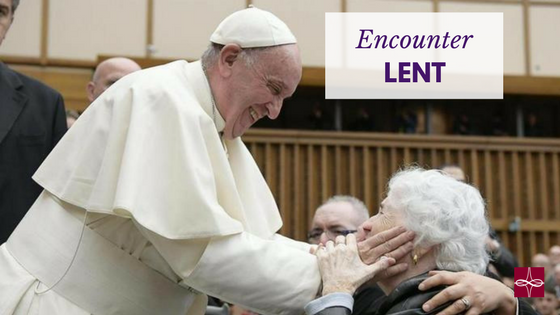

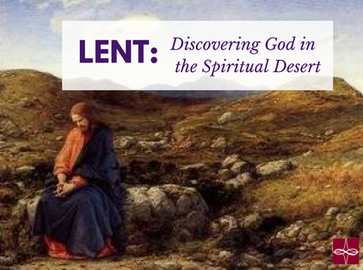

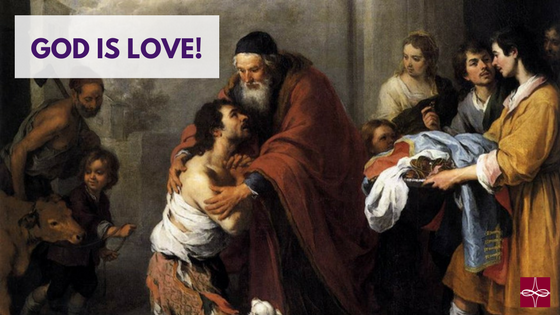

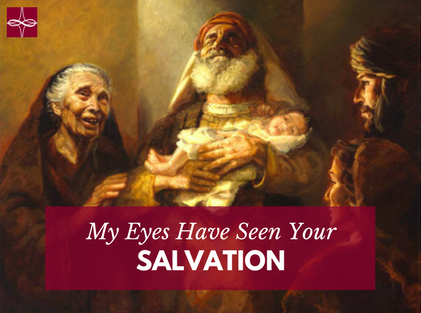



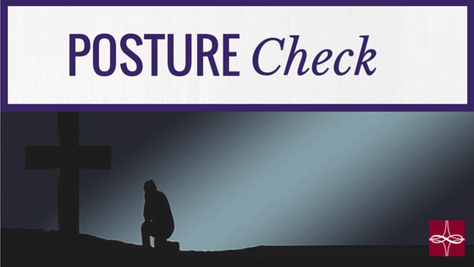

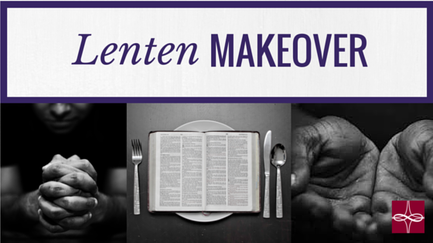




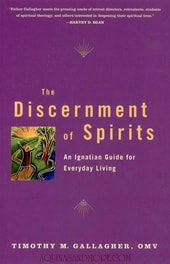
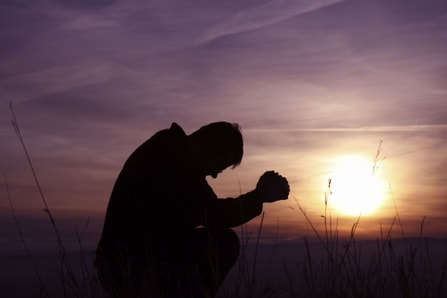


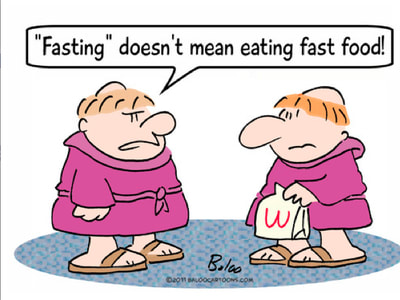
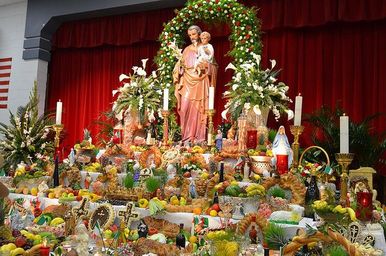






 RSS Feed
RSS Feed